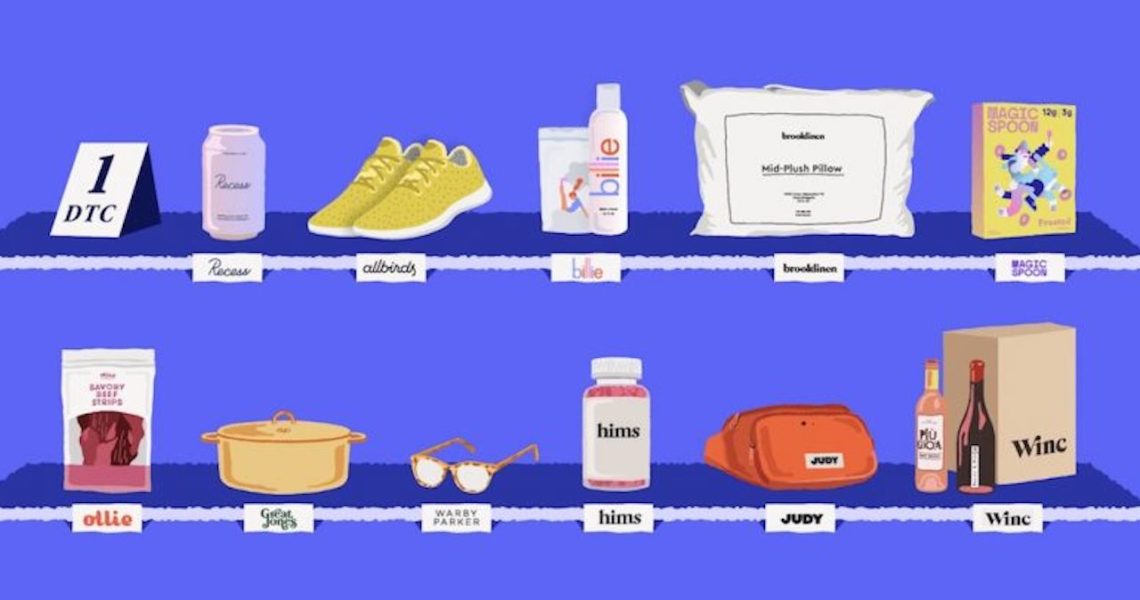On direct-to-consumer startup Twitter, everything is a branding lesson.
Nintendo, Oatly, a budding home cook, the location of a “Shop Now” button on a website, the amount of emails sent by a sock startup, and the toilet paper market, all offer important lessons to budding e-commerce entrepreneurs. And, lessons that need to be explained in 15-30 tweets.
DTC Twitter is obsessed with Tweet threads. Or, at the very least, they are frequently cited as recommended reads in industry newsletters like 2pm Inc. and Lean Luxe, and often serve as inspiration for further discussions in Clubhouse, Slack, or virtual events.
In the past week alone, there have been Tweet threads critiquing the site design of beverage brand Recess, why more DTC startups need to market themselves as luxury brands, and what J. Crew can learn from an (of course) young, digitally-native startup.
1/ Fine-tuning site conversion is an art, not a science
I spent years figuring out how to improve CR while balancing other biz priorities
This thread should give you insight into how I think about CR so you can apply to your own biz
Let's look at @takearecess
plz dnt kill me pic.twitter.com/UTQFTqfn5U— Tayler Carraway (@roost91) August 5, 2020
Heavy Twitter usage is not unique to the DTC startup scene, although for people hellbent on disruption, many do seem to spend an inordinate amount of time tweeting about it. But these Twitter threads are a good proxy for what DTC personalities and startups in general are good at (marketing) and gloss over what they consistently struggle with (unit economics/profitable businesses). At their best, the DTC thoughtleader threads help people find others who are interested in the same niche e-commerce topics as they are or experiencing similar business challenges. At worst, they’re performative oversimplifications of what makes a successful e-commerce business.
“I noticed that a lot of the ‘big players’ in DTC were sharing information in this medium,” said Kristen LaFrance, a senior content marketer at Shopify Retail who describes herself as “they mayor of DTC Twitter” in her bio. “It was clear that the industry was excited about this quick-win type of content that could go in depth while still providing actionable tips,” added LaFrance, who started writing threads last year critiquing the email and SMS marketing strategies of startups like Casper and Bombas. “I actually made a lot of connections through those threads because people were retweeting, tagging friends, and inviting people into the conversation,” she said.
Ad position: web_incontent_pos1
Yesterday, a brand I love and admire really let me down on a channel you REALLY don’t want to let a customer down on: SMS. 💔
Let’s get right into it.
Check out what went down between Casper and I on SMS (I know, Android green bubbles, just…✋ OKAY)
THREAD TIME 👇 pic.twitter.com/mJ8azNyiPp
— Kristen LaFrance (@kdlafrance) December 11, 2019
Kevin Lee, the co-founder of a soon-to-launch CPG startup, said that he started tweeting more as he was doing more research.As he’s preparing to launch his own startup, he wanted to see how other companies structured their marketing teams. After learning how Oatly has tried over the years to reduce bureaucracy in its in-house creative team, he laid out what other marketers can learn from Oatly’s strategy in 28 tweets, which garnered 1,400 retweets.
“My purpose is — here is some interesting information, and hopefully it inspires you in some way,” Lee said.
1/ Oatly doesn't think like the rest. They've been around for 20 years as a Swedish company fighting for attention. Last week, the oat milk company raised $200mm at a $2bn valuation. This is a lesson on creativity and how @oatly turns disadvantages into massive opportunities.
— Kevin Lee (@kevinleeme) July 24, 2020
Baked into these threads are lessons on what is paramount to building a successful DTC startups, lessons that are biased towards the Tweeter’s professional background. As a content marketer, LaFrance often focuses on the marketing strategies of DTC startups. Graphic designers will critique the web designs of DTC startups, and so forth.
Ad position: web_incontent_pos2
But what these threads often don’t focus as much on, is the non-public facing, albeit critical parts of the business like customer acquisition costs or churn rate. “It’s also a lot easier (and more engaging) to talk about “brand” in a tweet than it is supply chain optimization,” said Patrick Coddou, founder of razor startup Supply on — where else — Twitter. And, as many of these DTC startups are still young, unprofitable ventures, there aren’t as many lessons to glean from how they say, expanded into new markets or successfully gained market share over a competitor.
Lee acknowledges that some threads can feel self-serving, particularly if it seems that someone is heaping praise on a company they have a personal connection to. “It seems like they are trying to point to some conclusion that is a leading indicator for that product,” he said.
But, in speaking with fellow entrepreneurs, he feels that they can be too-self critical, and often veer on the side of not sharing their expertise enough.
“We forget that we are experts, and it would be remiss to not share that knowledge,” he said. “Maybe someone’s expertise is not at the fact that they worked at or built a company, but that they are a good storyteller.”




